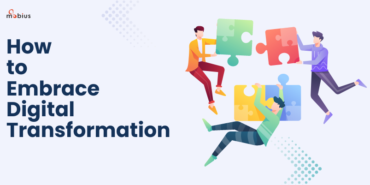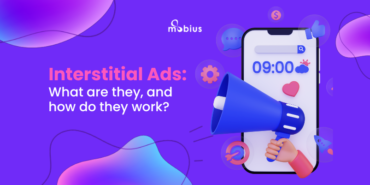“Digital transformation — the use of technology to radically improve performance or reach of enterprises.”
Businesses are aware that they are being carried by the tides of change whether they like it or not. It took fortune 500 companies around 20 years to get a billion $$ in revenue but today’s unicorns do it in 4 years on an average. Naturally, every traditional business is talking digital transformation and understands it is not a question of ‘if’ but ‘when’. A recent survey by Gartner, states that 42% of CEOs had a strong strategy in place for digital transformation despite the validation by 56% of those who said they have already seen increased profits due to this transformation. Surprisingly the biggest hurdle to get this change onboard was not about execution or change management (yet) but the even more fundamental step of figuring out what the transformation should look like and how to prioritize it.
Most CEOs now get that ‘digital’ is not just about e-commerce or digital marketing but is more about innovating across all aspects of their business. They have to think ‘digital’ products & platforms, ecosystems, service innovations, new channels, business models and so forth. This is a new area and most of them are not sure about when, where, and how to get started.
Surprisingly, there is an easy entry point right there staring in their faces that the most companies have missed. I’m talking about the ubiquitous internet that can be leveraged to build the digitalization strategy in a low risk, early success based approach.
To really embrace the transformation, the business needs to act holistically. If we take the Porter’s five forces framework, the areas to look into are:
- New entrants and Industry changes transforming the business scenario
- Consumer Behaviour and Market changes – The power of customers
- New Products/Business Models – Threat of substitute products
- Supply Chain opportunities and threats
The good news is that Internet, the great equalizer, can help here. Here are a few ways how other innovative businesses have leveraged the internet for their transformation journey:
Getting ahead of competition & tracking industry changes
Any aspect of the digital world will likely have an internet component to it. Just by keeping a metaphorical ‘eyes and ears open’, businesses can plan the direction, set priorities and not be left behind.
Use case: Use online news portals and search engines to track new services and products, press releases and interviews, news articles, and social media for information and trends about competition, industry, and consumers. It may be human curated or automated analytical reports. The businesses make use of the information in multiple ways:
- Stay abreast of the trends in the industry to strategize and prioritize investments
- Track competition’s products and announcements to ensure product parity while working on own differentiators
- Use forums and social media to track consumer preferences and gather feedback on their products and as well as their competitor’s.
- Track related services across industries to find partners and build an ecosystem.
Expanded markets and consumer behaviors
Marketing & sales: The industry is moving towards micro segmenting and targeting. The marketing & sales need to change the way they work. We see big B2C sites deliver customer specific content based on their interactions and browsing history. This trend is catching up in B2B sectors too.
Use case:
- Have an automation driven sales platform help the field sales team create customized proposals on-the-fly, tailored to individual prospects. The platform accesses public data from different sources to create tailored proposals that can be presented through their handhelds, significantly improving sales conversion and cycle times.
- Have sales teams constantly track their prospects’ or industry public content changes, and based on events of significance, trigger appropriate sales actions that are relevant to their current challenges.
Consumer behaviour:The new age consumer expects real-time, hyper-personalized service. While not all may have the Google, Amazon, FB level consumer data and the AI backed personalization, there is still a lot of information out there on the web that can be tracked at a micro-segment customer profile level, that is available to all businesses.
Use case: Leverage machine learning to provide personalized services even when they do not have enough internal customer data. Discover and use proxy data from public, govt and social media sources and create an ongoing data source that feeds into their algorithms. Their data scientists also use the internet to discover, access and curate large data sets that are needed for their machine learning corpus to create better predictive algorithms.
Innovative products & business models
Products & services: Digital is not just about products or services that are offered through the internet. It is really about re-configuring the business to deliver to the emerging market trends. Consumer behavior, new distribution channels and business models that are enabled by technological advancements are driving this and the existing products & services can still be aligned to these trends.
Use case: Use a structured methodology to discover all the related public data available on the core products. Figure out the linkages that add more value to current offerings or create new product opportunities for new micro segments (and sometimes through partnerships).
Business models: There are multiple new business models like hire or share (vs buy), Freemium, pay per use, etc that have changed the way businesses looked at their revenue generation. The internet offers the easy way to try some of these.
Use case: Use customizable data workflow platforms to create new solutions without significant cost or time delays. These platforms can be used to create minimum-viable-products to test market ideas and then bring them into the market. The business models can also be flexible with success-based or pay-per-use approaches.
Delivery through digital ready supply chain
Supply chain: The good and bad news is that the markets are global now and so is competition. However, it also means that SME businesses are also able to access the global supply chains making it easy to compete more effectively.
Use case: Marketplaces have made it easy to compare global suppliers in terms of pricing and reputation. Similarly, supplier onboarding solutions and competitive intelligence solutions have also made it easier to find and add suppliers helping businesses find better alternatives for improving their supply chains.
These are just some of the possibilities based on our experience. Because it leverages the publicly accessible internet, these approaches require much lesser investment in terms of time and money and it is also easy to pilot such projects. These could be the low-hanging fruits whose results can provide the insights and create the impetus for initial transformation with the integrated strategy to follow later. Despite all the hype around the start-ups and unicorns, the real competition is still likely to come from the existing players who were quick to embrace the change. As Sun Tzu said, “Opportunities multiply as they are seized”. Leveraging the public internet could give a business the head-start to seize the day.







